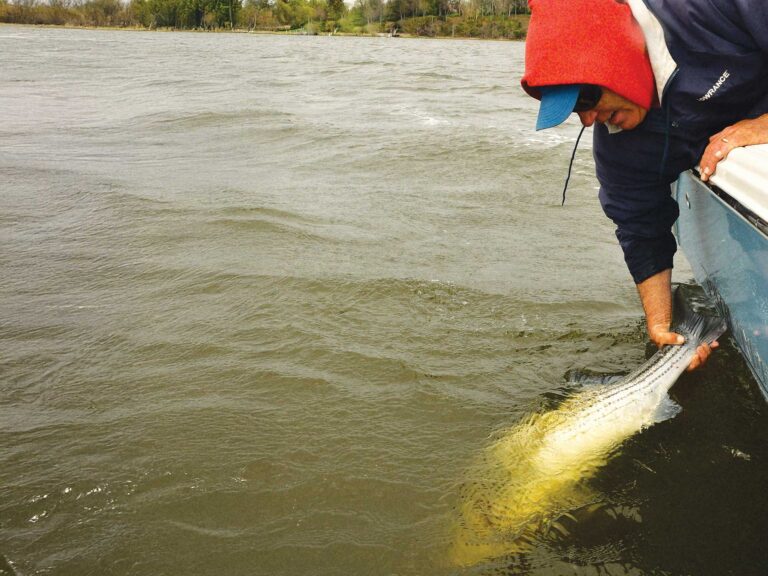Tampa Bay has more seagrass than at any time since 1950, thanks to a collaborative effort to reduce nitrogen pollution in the Bay. By implementing a variety of pollution-control projects, the Nitrogen Management Consortium–a partnership of local and state agencies and key industries–reduced nitrogen loads to the Bay by more than 100 tons from 2007-2011, and more than 500 tons since 1996.
“This is a great example of how local, state and federal entities can work together, with our public and private partners, to develop the strong technical basis needed for effective policies for clean waters and the aquatic resources that they support,” said Tampa Bay Estuary Program Executive Director Holly Greening.
Success must now shift toward the southeast coast of Florida, where degradation of the Indian River Lagoon is alarming anglers across a number of counties. The Indian River Lagoon is a diverse, shallow-water estuary stretching across 40 percent of Florida’s east coast, and it’s rapid loss of seagrass and water quality in the last three years is sending up red flags.
The Superbloom
In Spring 2011, an algal “superbloom” occurred in the portion of the lagoon system known as Banana River Lagoon and eventually spread into northern Indian River Lagoon and farther north into the Mosquito Lagoon, said Hank Largin, of the St. Johns River Management District. The immense bloom covered approximately 130,000 acres and led to a noticeable reduction in water quality. Concurrently, a lesser bloom extended from just north of Melbourne south to the Vero Beach-Fort Pierce area, and its effects are still being felt as far south as Stuart.
By August 2011, approximately 32,000 acres of seagrasses were gone, a loss of about 44 percent, explained Largin. A year later, a brown tide bloom began in the Mosquito Lagoon and moved into the northern Indian River Lagoon near Titusville. These blooms and the resulting seagrass decline far exceeded any documented or remembered events in terms of geographic scale, bloom intensity and duration.
The magnitude of the seagrass loss is alarming because seagrass is an indicator of the lagoon’s health. It’s a nursery, refuge and a place of forage for a variety of fish and other marine life. In economic terms, the 2011 seagrass loss represented a reduction of $150 million to $320 million in commercial and recreational fisheries value in 2012.
Turning Point
The Indian River Lagoon is now at a turning point. And fishermen should be at the forefront to do whatever it takes to bring the Lagoon back to health.
Restoring and expanding estuarine habitat increases fish populations, no question about it. A recent report by Restore America’s Estuaries (RAE) and the American Sportfishing Association (ASA) **detailed habitat restoration across the country. Entitled **“More Habitat Means More Fish,” the study makes a powerful case that investing in our nation’s coastlines and estuaries leads to healthy habitat and strong fisheries, which has an obvious positive impact on fishing-related businesses.
Over 75 percent of our nation’s commercial fish and 80 to 90 percent of the recreational fish catch depend on estuary habitat at some point in their lifecycle, says the report. Fish populations can respond quickly to habitat improvement and the impact will last over an extended period of time. Rebounds in fish populations can occur within months and persist for years.
Moving Forward
The coming months could herald a slow recovery of this unique ecosystem or a continued decline.
The St. Johns River Water Management District, Indian River Lagoon National Estuary Program, federal and state agencies, local governments and educational institutions are individually and collectively working to find answers to the cause of the superbloom and to identify what, if anything, can be done in the future to avoid a similar event.
Various partners are investigating the possible causes of the blooms and developing strategies to reduce their magnitude, duration and frequency. Chief among this work are the Indian River Lagoon 2011 Consortium and the District’s Indian River Lagoon Protection Initiative. The Initiative is being developed to better understand the sources, cycling and transport of lagoon nutrients and the long-term impacts from the loss of the lagoon’s seagrasses, as well as potential strategies aimed at restoring the lagoon to a seagrass-dominated ecosystem.
One key issue that must be dissected is the nasty fertilizer and other runoff (nutrient overload) entering into the Lagoon from local sources, similar to what Tampa Bay had to battle. With state scientists, biologists and specialists redoubling their efforts to determine strategies for improving the long-term health of this waterway, maybe this part of the state can see similar success to Tampa Bay waters.









